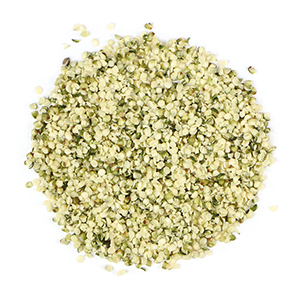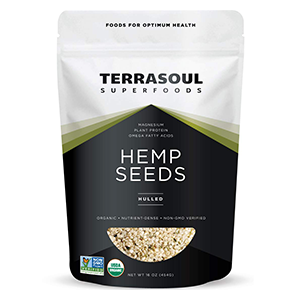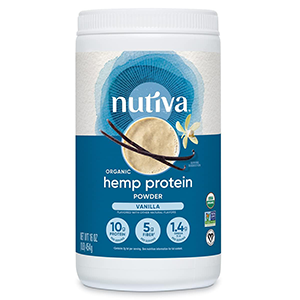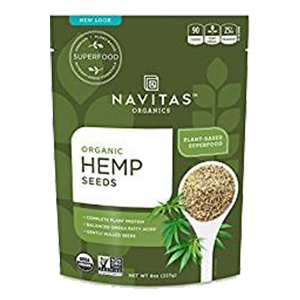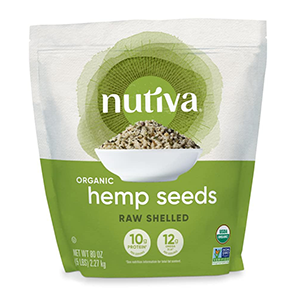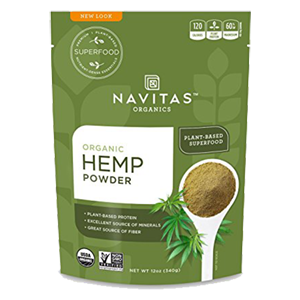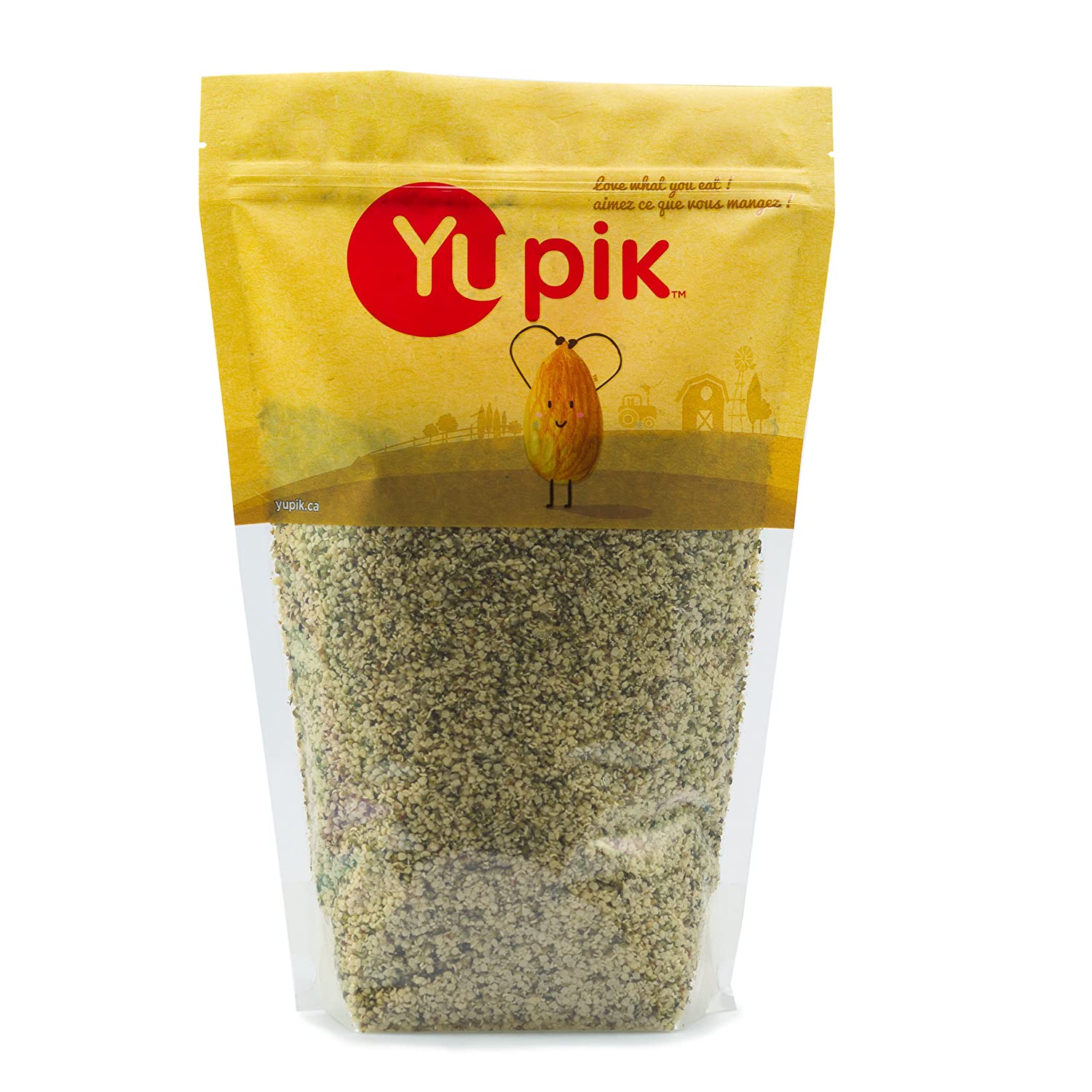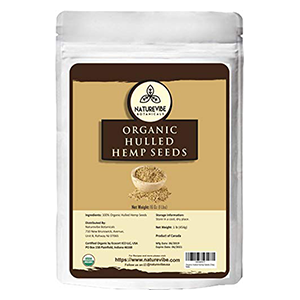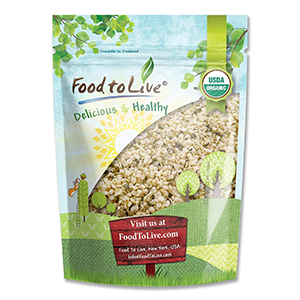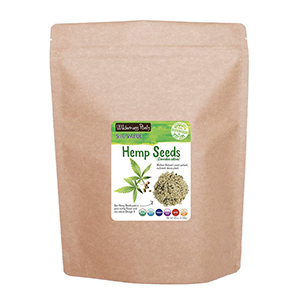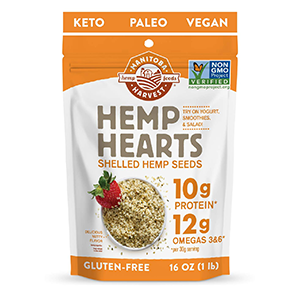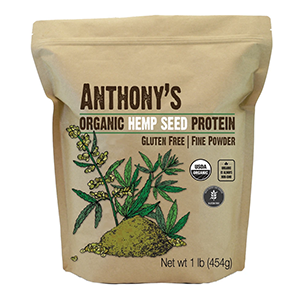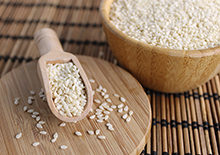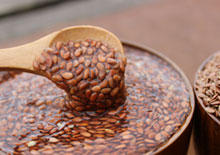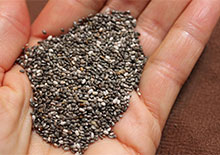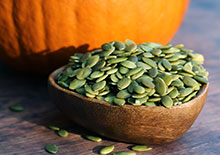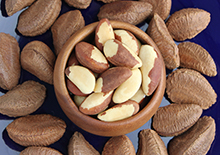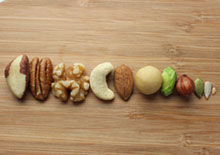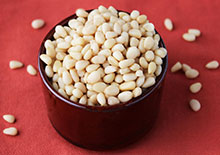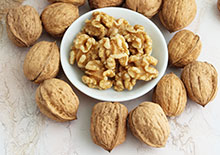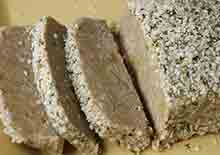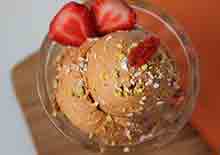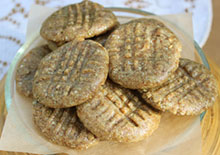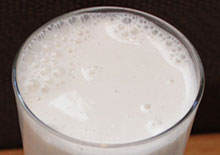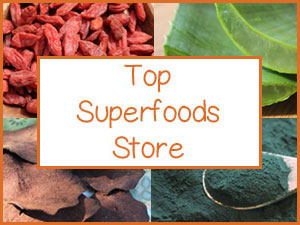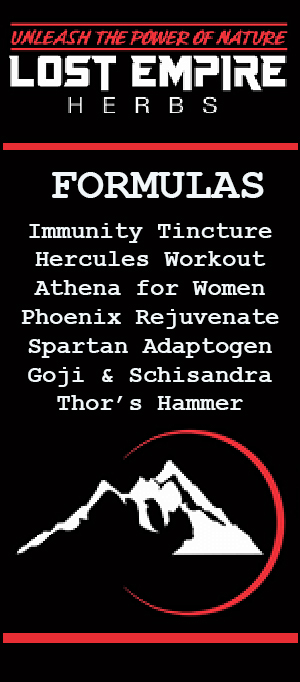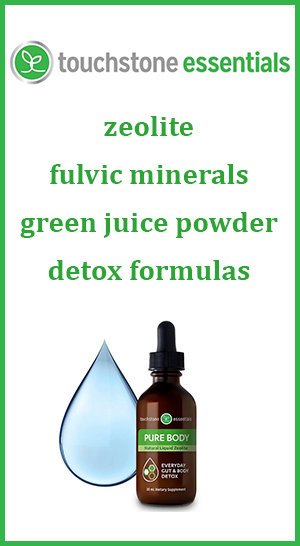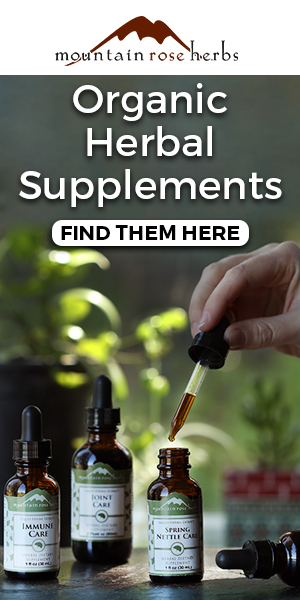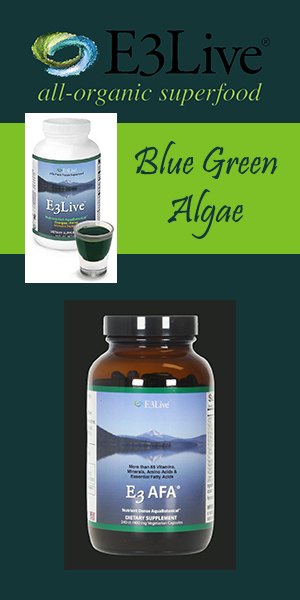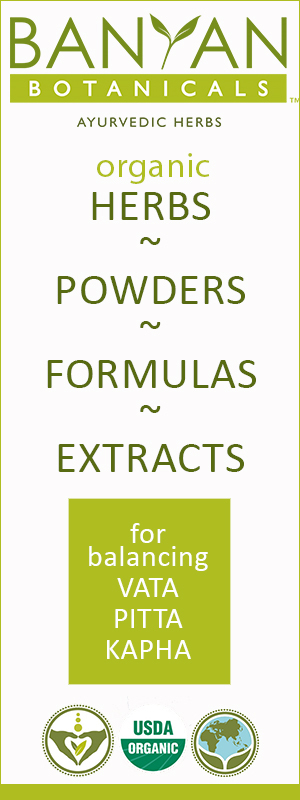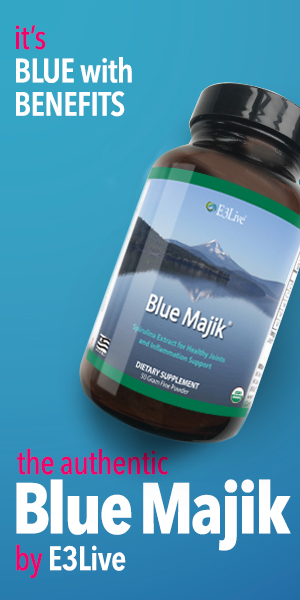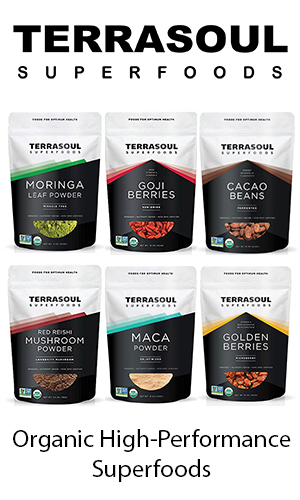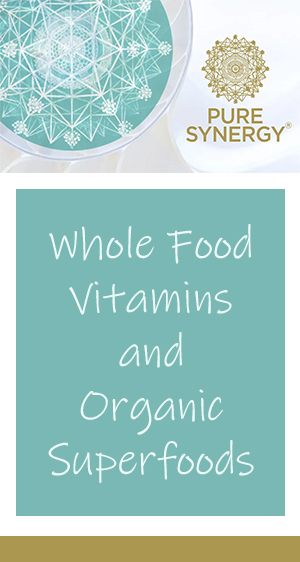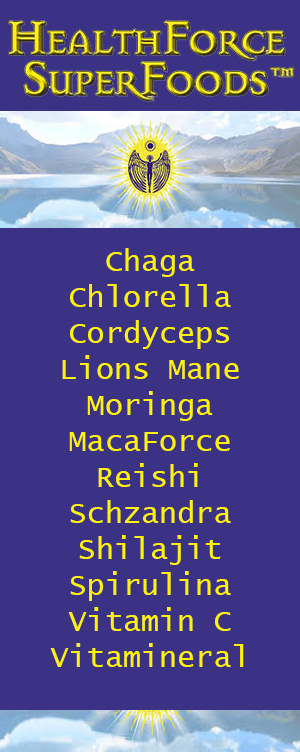- Home
- Nuts and Seeds
- Hemp Seeds
Benefits of Hemp Seeds, Source of Protein and Omega-3's
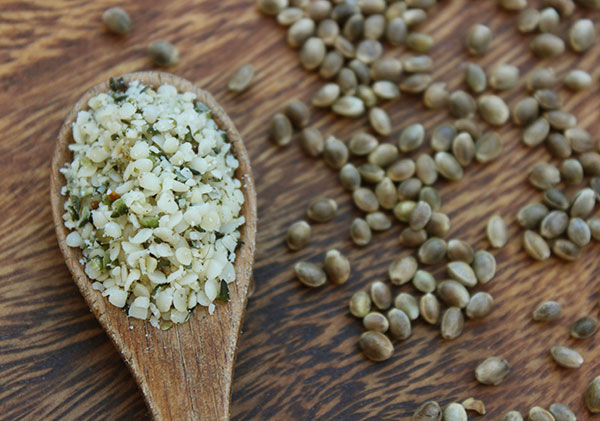
The hemp seed, comes from the hemp plant, a seedy fibrous species most well-known for its historical use in making textiles, rope and paper. The use of hemp was first documented as an agricultural crop in one of the oldest scientific texts of ancient China, the Xia Xiao Zheng, written approximately 1500 BC.
While the hemp plant itself has been grown and used extensively in all parts of the world for thousands of years, large scale use of hemp seeds has really only occurred in the last few decades. This is mostly due to the fact that the tiny seeds need to be mechanically hulled in order to make them edible and pleasant to eat.
They are now frequently sold by the pound as a commercial seed variety, promoted by many health enthusiasts as the latest top superfood. This is because the shelled seeds are a highly nutritious food containing more quality plant-based proteins and polyunsaturated fats than most other legumes, nuts and seeds.
Hemp and its derived seeds are not the same plant as its THC potent cousin, "marijuana", known for its psychoactive qualities. Therefore, the seeds can't make you "high", they can only make you "healthy."
By comparison,
hemp varieties typically contain less than 1% THC, or
tetrahydrocannabinol, and after shelled, comprises only trace amounts.
In 2015 published research in the Journal of Agriculture and Food Chemistry, it was shown that hemp seeds contain four unique constituents or lignanamides. These newly identified antioxidants are believed to "add to the diversity of hemp seed composition" and "may be a good source of bioactive and protective compounds."
Hemp seed, also spelled "hempseed", is a worthy source of omega-3 fatty acids, a common nutrient missing in most average diets which are typically higher in omega-6's. The hempseed averages in at about a 3 ½ to 1 ratio of omega-6 to omega-3, which is unusual for most nut and seed variations, aside from chia and flaxseeds.
What do they taste like?
The seeds have a nutty, sweet flavor and slightly fatty texture that can be enjoyed in salads, a top meals or added to blended drinks and assorted recipes.
Hemp seeds can be notably a bit more expensive than other varieties, depending on where you live. This is primarily due to the fact that in some countries, like the U.S., it is still currently (2015) illegal to grow hemp as a food or resource crop.
Although hemp fiber has been used for centuries in the paper, textile, biodegradable plastics and construction industries, it was banned as an agricultural crop in the United States in 1957. As a multipurpose highly efficient plant, this was controversially believed to be due to competitive interests with the petroleum and other multi-national industries as well as its association with its related marijuana species.
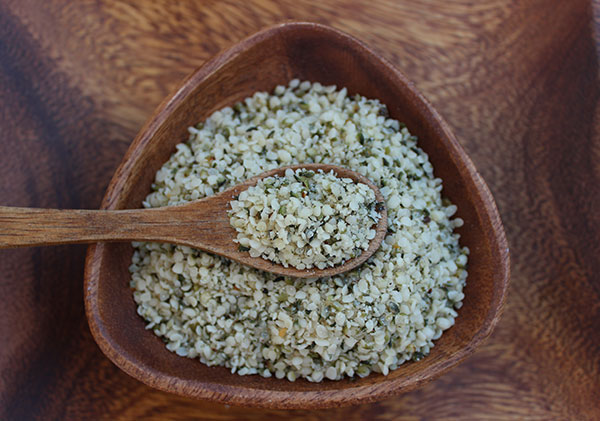
What are Hemp Seeds?
Hemp seeds, also referred to as "hemp nuts" or "hemp hearts", are produced by the hemp plant Cannabis sativa L. at the end of its growing cycle. These small light brown, sometimes striated, seeds have a firm outer shell.
Inside of this outer husk is a fatty creamy-white and green seed. Most of the hempseeds sold commercially, as an edible food source, are this inner seed with the hull or shell removed.
These seeds are relatively unattractive compared to other seed types, being tiny and are easily broken up into fragmented pieces or particles because of their size and fairly soft texture.
While some manufacturers sell whole unshelled seeds, either roasted or unroasted, they are largely inedible in our opinion and much like eating a sunflower seed with the shell on.
The harvested seed contains chlorophyll which comes from the two cotyledons or "seed leaves" naturally present in the seed that enable it to reproduce as a new plant if given the opportunity to do so. This component is made inactive, however, when shelled or hulled. This part of the seed is recognizable by the small green particles that are sometimes attached to the seeds. This element is also rich in oil content. (Source)
Hemp or Cannabis sativa L. is a hardy resilient species that can grow in a number of different habitats and climate zones around the world. Thought to have originated in Central Asia, hemp shares the same family as the hops species Cannabaceae.
The stem or stalk of the hemp plant produces a durable tough fiber that has been industrially utilized as well as widely cultivated by humans worldwide for thousands of years.
As a fibrous and versatile plant species, hemp is most well known throughout history for its extensive use in making textiles, paper and rope. The tensile strength of hemp provided the materials required for the first sailing ships and was also a reported textile and paper product used to create the first American flag and to make dollar bills in 1914.
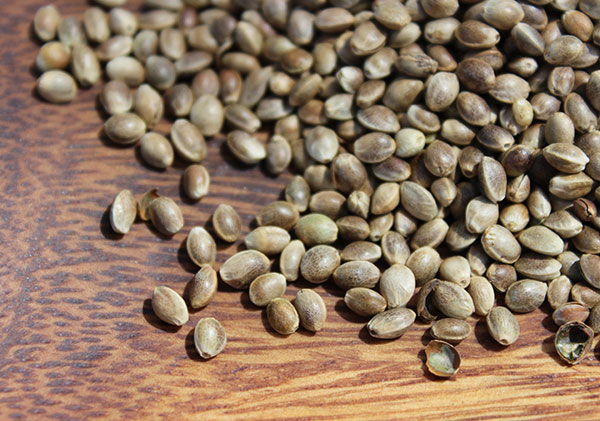
Do Hemp Seeds Contain THC?
Industrial hemp is a non-psychoactive oilseed variety
and is a slender, woody, seedier and tall growing version of the Cannabis
sativa species known as marijuana. Most of the THC in hemp is concentrated in the flowers and leaves, not on the seeds themselves, which usually contain less than 1% THC content.
As Dr. David P. West explains in his article "Hemp and Marijuana: Myths & Realities" on the North American Industrial Hemp Council's website, "The THC levels in industrial hemp are so low that no one could get high from smoking it. Moreover, hemp contains a relatively high percentage of another cannabinoid, CBD, that actually blocks the marijuana high."
Cannabidiol (CBD) is officially classified as non-psychotropic. Some current scientific evidence does in fact show "the ability of CBD to counteract psychotic symptoms and cognitive impairment associated with cannabis use as well as with acute THC administration." (Source)
According to one study "evaluating the impact of hemp food consumption on workplace drug tests" it was concluded that THC concentrations in 300 g of hulled seeds "appear to be sufficiently low to prevent confirmed positives from the extended and extensive consumption of hemp foods."
Legalities of Growing the Hemp Plant in the U.S.
Ironically, the U.S. is the world's primary consumer of hemp-based products, but hemp plant cultivation is considered illegal in most states as of 2015. Hemp seeds, clothing, oil and other hemp-derived materials are currently being imported from Canada as well as China.
In 2014, the United States "Farm Bill" went into effect and, under
section 7606, defines the hemp plant as a non-drug oilseed and fiber
variety distinct from "marijuana." This made it legal for hemp be grown by educational institutions for research purposes by
universities or state departments of agriculture to determine whether
commercial production of hemp would be advantageous as a marketable crop
for American farmers and businesses.
This section of the Farm Bill states that, "The term 'industrial hemp' means the plant Cannabis sativa L. and any part of such plant, whether growing or not, with a delta-9 tetrahydrocannabinol concentration of not more than 0.3 percent on a dry weight basis." (Source)
In the U.S. states of Colorado, Oregon and Vermont, farmers can be licensed and/or registered to grow hemp under state law guidelines, but it is still not produced on a large-scale because of legal limitations.
Hemp, being a relatively easy plant to grow with a multitude of uses and industrial applications, is surely to make a comeback as an ecologically sustainable agriculture crop in future years. We feel it's really just a matter of time and these small steps continue to be an indication of these changing perspectives and paradigms.
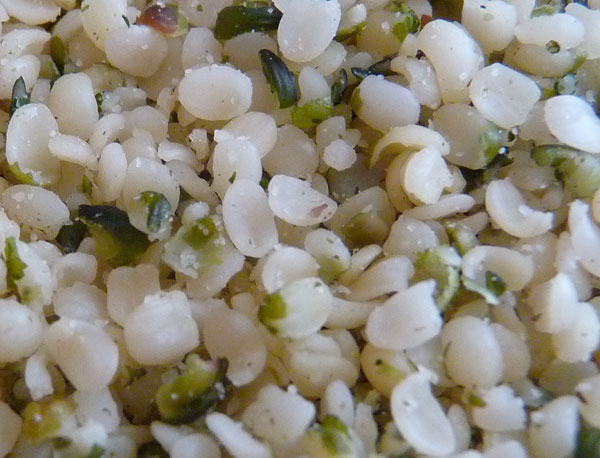
Hemp Seeds Benefits
Highly Digestible Hemp Protein Content
The seeds not only contain a good amount of protein, but are naturally abundant in higher quality globulin proteins known as edestin and albumin, which are easily converted to amino acids in the digestive tract. Edestin comes from the Greek language meaning "edible" and is considered a very digestible form of protein exclusively unique to the seeds of the hemp plant. (Source) Albumin is a protein similar to that found in egg whites.
One University study conducted in Finland demonstrates that "The two main proteins in hempseed are edestin and albumin. Both of these high-quality storage proteins are easily digested and contain nutritionally significant amounts of all essential amino acids."
It was additionally confirmed in Canadian research that "the protein from hemp seed is highly digestible in either its native form [hulled] or as a protein flour."
According to other research, hemp proteins are easier to digest because of their lack of oligosaccharides and trypsin inhibitors, which can affect protein absorption. Trypsin is a digestive enzyme that your pancreas produces that enables you to digest dietary proteins. Some legumes, like soy and other nut/seed types block trypsin and inhibit protein assimilation.
Hempseed protein, as well as omega oil content, is sensitive to heat and should not be cooked, roasted or baked as heat-damaged hemp proteins are not efficiently absorbed by the body.
In the above-mentioned investigation based in Canada, it was stated that "Caution must be used in extending protein digestibility values to hemp-containing foods that have been subjected to high heat or oxidizing conditions during processing."
The seeds can often be consumed raw, without the need for soaking, as they are highly digestible by most people in this form. However, because of the small size of the seed, they can be hard to completely chew thoroughly. For this reason, we recommended blending the seeds into drinks, shakes, dressings and various raw unheated desserts or recipes.
Hemp Protein Nutritional Data
One hundred grams or approximately ½C of hemp seeds contains between 31-33% protein and meets 73% of the Daily Value for protein, based on a 2,000 calorie diet.
Nutrition Data, measuring protein content of different nuts and seeds, shows that one 30g (3T) serving of hemp seeds contains 11 grams of protein, around twice as much as most other varieties.
Protein Comparison of Nut and Seed Types
(Based on a one ounce serving size)
Hemp seeds - 10.3g
Pumpkin Seeds - 6.9g
Almonds - 6g
Pistachios - 5.8g
Sunflower Seeds - 5.8g
Flaxseeds - 5.1g
Cashews - 5.1g
Chia Seeds - 4.4g
Walnuts - 4.3g
Pecans - 4.3g
Hazelnuts - 4.2g
Brazil Nuts - 4g
Pine nuts - 3.8g
Macadamia - 2.2g
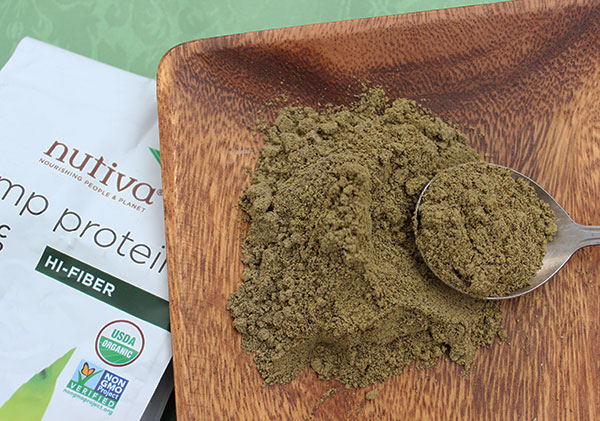
Hemp Protein Powders
Hemp protein powders are commonly produced from the seeds as a way to concentrate its protein content. This process is achieved by mechanically removing most of the oil content (about 90%) from the seed, usually via expeller pressing methods. This produces a seed cake that is then cold milled and sifted. Hemp protein powders are often a byproduct of hemp seed oil production.
Protein powders are not as susceptible to rancidity like the extracted oil or shelled hemp seeds, which contain higher amounts of heat volatile omega oils.
A hemp protein powder is a much healthier alternative over soy or whey protein and is also a good source of fiber. Although soy contains a higher quantity of plant-based protein than hemp, it also comes with enzyme inhibitors that block important nutrients in the protein from being absorbed efficiently.
Whey protein comes from milk and contains the hard to digest "lactose" compound, as well as possible concentrations of hormones, antibiotics and various chemical toxins.
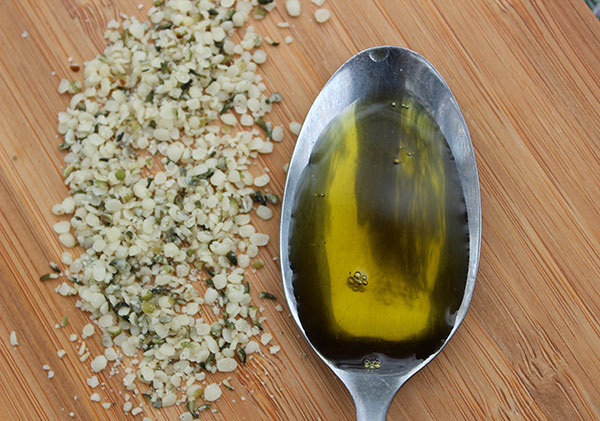
Source of Essential Fatty Acids and Omega-3's
Compared to other nut and seed varieties, hempseed is particularly known for its high amounts of polyunsaturated fats or essential fatty acids. Polyunsaturated fats or PUFA's are slightly more concentrated in hemp plants from colder climate zones. This is why Canadian hemp seeds tend to have more omega oil content than those derived from China.
The seeds include the essential fatty acids, omega-6 and omega-3, offering them in a balanced 3:1 or 4:1 ratio, depending on the quality of oils.
In a typical Western diet, high in refined vegetable oils and grain-fed animal products, omega-6 is much higher than omega-3 at between an average 10:1 to 20:1 ratio. Too much omega-6 can cause chronic inflammation in the body and encourage other related health problems over time.
This is why it is important to make sure you consume adequate amounts of omega-3's in the diet on a regular basis. The general standard for this is between a 4:1 or 1:1 ratio. This means that for the amount of omega-6 foods you consume you would need to eat at least 1/4 of that amount in omega-3's to provide protective anti-inflammatory effects.
There are a variety of ALA omega-3 sources, hemp seeds being one of them, but other foods include chia, sacha inchi and flaxseed as well as green leafy vegetables, microalgaes, raw cold water fish with small amounts also available in seaweeds, walnuts and sprouts. Some of these foods can also be concentrated into oils for supplementation purposes, like algae oil, sacha inchi oil, flax oil and, of course, hemp seed oil.
Essential fatty acids are "essential" because the body does not make them and we need to consume them through the foods we eat. They are also required for such things as neurological functioning, cell membrane stability, oxygen transfer, inflammatory regulation, immune response and cardiovascular maintenance.
In addition to higher proportions of omega-3, the seeds also contain good quantities of the omega-6 fatty acid, gamma linolenic acid or GLA. GLA is known to reduce inflammation, help to balance hormones, treat eczema and decrease breast tenderness in women. It is especially concentrated in borage oil, evening primrose oil, black current seed oil as well as hemp seed oil.
The shelled seeds of the hemp plant are also rich in the fat-soluble antioxidant, vitamin E and its group of compounds that include both tocopherols and tocotrienols. Daily intake of vitamin E is helpful for moisturizing and renewing the hair and skin. It additionally serves to guard against the damaging effects of free radicals as well as protect the skeletal, cardiovascular and neurological systems.
Hemp Seed Fatty Acid Composition
One ounce of hemp seeds contains 12.6g of fat compromised of 0.9g saturated fat, 1.7g monounsaturated fat and 9g polyunsaturated fat. The seeds yield an average of about 7g of omega-6 to every 2g of omega-3's.
Other fatty acids in hemp seeds and oils include the unsaturated fats: stearidonic acid, oleic acid and eicosaenoic acid, while the saturated fats include: palmitic acid, steric acid and arachidic acid.
"The tiny shelled seed of the amazing hemp plant has a pleasant nutty flavor, similar to sunflower seeds. The seeds are packed with nutrients -- they are an excellent source of the essential fatty acids (EFAs), delivering these EFAs in a balanced 3.75:1 ratio. Hemp seed is a source of complete protein, containing all the essential amino acids."
-Gabriel Cousens, M.D.
"There is a Cure for Diabetes"
Will the Omega-3 in Hemp Convert to DHA?
There are some health authorities, like Dr. Rick Dina, who believe that we can indeed get DHA out of plant based omega-3 oils, but only when the diet offers a balanced ratio of omega-6 to omega-3, at least the recommended 4:1 ratio.
This is, of course, largely debated by the scientific community who only test DHA levels on subjects eating a diet high in omega-6 fats.
Good for Cardiovascular Health
The omega fatty acid content in hempseed is considered a heart healthy fat and food source that can help to reduce inflammation, decrease LDL cholesterol levels and normalize high blood pressure, all of which are associated with cardiovascular disease.
In research conducted analyzing the effect of hemp seeds on cholesterol levels it was demonstrated "that when hempseed is added to a cholesterol-enriched diet, cholesterol-induced platelet aggregation returns to control levels."
In another study researching the benefits of dietary hempseed consumption on cardiovascular health, data concluded that "hempseed has the potential to beneficially influence heart disease."
Good for Weight Loss and Diabetes
The nutritional profile as well as the dietary fiber content found in hemp seeds can be good for those wanting to loose excess body weight. Hemp, as well as chia seeds, are known to provide long lasting fuel sources that satisfy the appetite for longer periods of time. Consumed along with a health promoting diet, these two seeds are our top nut and seed choices for achieving ideal body weight.
Because hempseeds are a protein-rich food, they can help to replace animal products and dairy for those interested in following a more plant-centered diet. They can also be consumed as a protein powder which will reduce the fat content and calories.
The fatty acids in hemp additionally help to regulate blood sugar levels, which can also be helpful for those with diabetes.
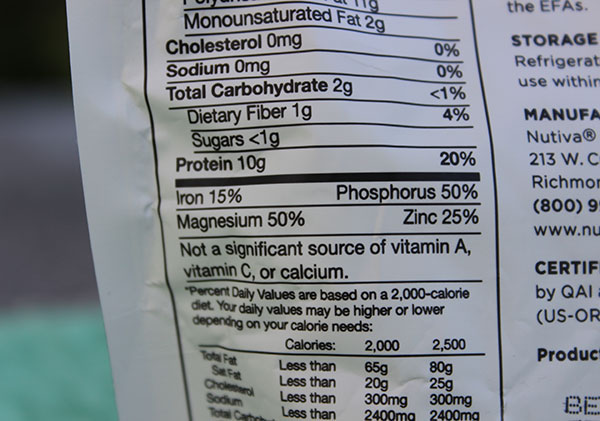
Other Beneficial Nutrients
Hemp seeds are high in magnesium (50%DV), phosphorus (50%DV), zinc (25%DV) and iron (15%DV) with Recommended Daily Values based on a one ounce serving for a 2,000 calorie diet.
Are Hemp Seeds a Raw Food?
Some of you might be wondering if hemp seeds are raw or if they have been heat treated or steam sterilized. The information we have come across in our investigation shows that whole unshelled hemp seeds when imported into the U.S. from Canada or China are required by law to be steam sterilized to ensure that the seeds are no longer viable and can't be grown to produce another hemp plant.
Currently in the U.S., hemp hearts or seeds "without the shell" are not mandated by legal regulations and can be imported as either a raw or sterilized seed. Really, what it comes down to is the integrity of the company you purchase them from and if they are into providing the highest nutritional value. Raw seeds invariably retain more nutrients, protein, and also preserve the volatile omega oil content.
Every country has their own set of requirements, however, and you should do your own research if you eat a lot of hemp seeds and are concerned about possible heat treatments.
According to our direct communications with Sunfood Superfoods, "They are truly raw and never processed at any temperature above 118 °F." It also states on their website that "They are carefully manufactured using a cold process to ensure delicate enzymes and nutrients remain intact to bring you the highest quality, purest hemp seeds available."
Navitas Naturals claims, in an email exchange, that "The processing temperature of our Hemp Seeds generally does not reach higher than 115 °F and are not pasteurized, roasted or heated in any way."
Nutivas likewise expresses that their hemp products are processed at low temperatures. Manitoba Harvest Hemp Foods also ensures us that their raw shelled hemp seed do not go through any heat treatment.
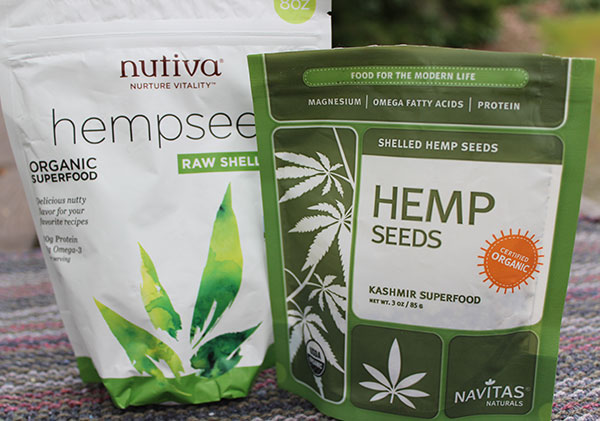
Types of Hemp Seed
Whole Hemp Seeds - Unshelled seeds are illegal in the U.S. unless steam sterilized to make the seed inactive. Whole unshelled hemp seeds are occasionally sold as a snack food to be consumed shell and all. We do not find them to be very edible in this form, however. They have also been heat treated which degrades nutrient content.
Shelled Hemp Seeds - These seeds have been pre-shelled and can be readily blended or processed into foods and drinks.
Hemp Meal - This is ground hemp seed, with fat, oil and fiber content intact.
Hemp Protein Powder - Produced from separating oil/fat from the seed and processing as a fine powder for use in recipes or protein shakes.
Hemp Seed Oil - This is the raw, unrefined, expeller cold-pressed oil of the shelled hemp seed. It is light green in color and exceptionally rich in omega fatty acids.
Hemp Nut Butter - Finely ground shelled seeds churned into a creamy nut butter consistency.
How to Use
Hempseeds taste like a combination of pine nut and sunflower seed, often described to have a nutty or "cheese-like" flavor.
Although shelled hemp hearts or seeds are delicious on salads and other foods, they are not the type of seed you would traditionally eat by the handful, like other varieties. Because they are quite small and harder to chew completely, we often recommended blending them into shakes, nut pates, raw soups, dressings and desserts for highest nutritional uptake.
The seeds can also be ground into a fine meal and sprinkled on foods. It is important to store your seeds or meal in the fridge or freezer to preserve nutrient content and guard against rancidity.
Enjoy the shelled seeds in some of our website recipes in the links at the bottom of this page.
Precautions:
Hemp seeds should, of course, be avoided by those who have nut and seed allergies. Some brands are also processed in facilities that also process peanuts, which can be toxic to certain individuals.
Shop Related Products (About Affiliates & Amazon Associate Paid Links)
Affiliate Disclaimer: This section contains affiliate product links. If you make a purchase through our recommended links, we receive a small commission at no additional cost to you. Thanks for the support.
